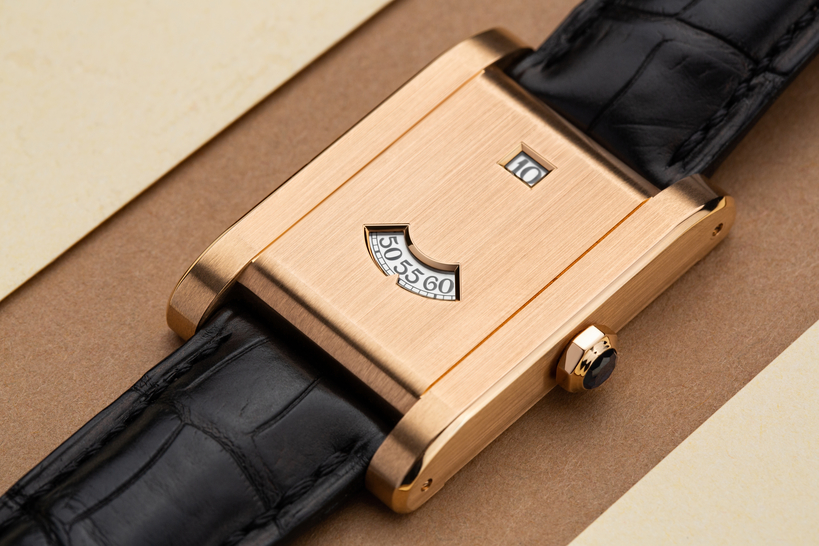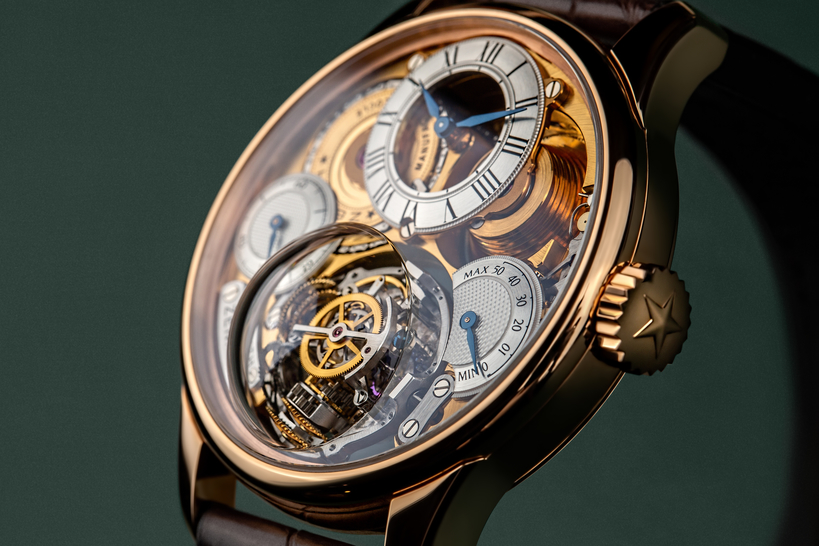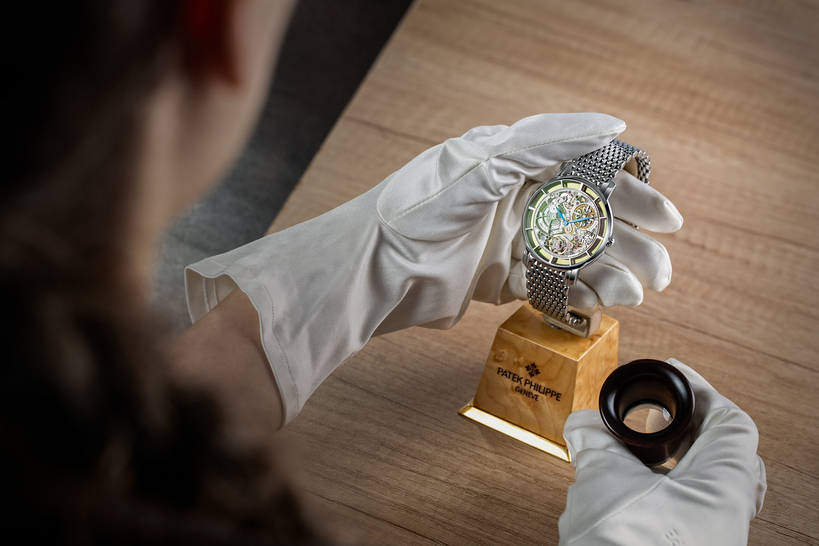For the 90th anniversary of the iconic Jaeger-LeCoultre Reverso, we're going to discuss the revolution they caused in the sport de luxe luxury watch segment.
Watches that become iconic have more than just a revolutionary case design and a movement that's groundbreaking in terms of reliability for their time. Not only do they encapsulate the charms of timekeeping, they also determine course of future development. The Reverso model has achieved all of this with with flying colors.
Polo is one of the most beautiful games, but it's also one of the roughest and toughest. There's a good reason why the British Army officers stationed in colonial India devoted almost all of their free time to playing this game.
They were certainly no paupers, and almost every one of them sported a freshly minted wristwatch that would have been considered the height of fashion. The trouble was that almost all the players would have to turn in their watches for repairs after every game.
Not only would their plexiglass dial covers be smashed to smithereens or have flown out altogether, the movements simply couldn't handle all the knocks and shocks they took on the field. Swiss businessman and private watch dealer César de Trey was in colonial India at the time, supplying dental instruments to a European commune. He was also responsible for delivering new watches and repairing old ones along the way.
The British officers approached him in 1929/1930 with a request to come up with a shock-resistant watch that could be worn during a game of polo. On his subsequent trip back to Europe for goods, de Trey met with representatives of two very close companies, but ones which were still independent at the time: Jacques-David LeCoultre's watch manufacture and French partner firm Jaeger S. A. He asked the Swiss company to make a thin little reliable movement, and turned to their French partner for the case.
Watch engineer René-Alfred Chauvot was commissioned to take on the task of designing it. He also invented the unique construction that made the case interesting, the chassis that holds a swiveling watch capsule. One side of the rectangular capsule had a dial protected by a plexiglass cover, and there was a fairly thick protective steel cover on the back which could withstand a knock from an opponent's stirrup or other equipment, not to mention the whack of a polo stick.
He knew enough to be able to appreciate that what he'd created was a real technological feat, which is why he wanted to get it patented as quickly as possible. The application for construction comprised of 30 original parts was received by the Paris patent office on March 4, 1931. Moreover, the patent was drafted so thoroughly and exhaustively that it's almost impossible to circumvent.
And this not only happens to have played a major role in the Reverso's success, it also spurred progress in watchmaking. These aren’t empty words. The fact is that although it may seem like anything can be designed on powerful supercomputers these days, no one has come anywhere close to creating something as reliable or durable. And many attempts have been made.
However, all the other designs could only withstand a maximum of two or three hundred swivels before they’d fall apart. Let's make it clear from the outset that we won't be considering the case design of another iconic model a worthy alternative, as the Cartier Tank Basculante was created by the very same René-Alfred Chauvot based on the Reverso.
The Reverso was equipped with the ultra-thin manually wound Caliber 64 in the classic round shape. It was assembled and tested at the LeCoultre manufacture but a different name was written on its black dial with bright white indexes and hands. The only name it bore was "Reverso".
The model had a minimalistic Art Deco rectangular case, which was the most popular style at the time, and it was 38 mm long, 24 mm large and 6 mm in height. These proportions are perfectly in line with the "golden ratio" parameters. When you consider that the Reverso was only the second wristwatch to be given a rectangular case after the Cartier Tank, you can see why it caught the attention of wealthy people from all around the world.
The application for construction comprised of 30 original parts was received by the Paris patent office on March 4, 1931
Another of the Reverso's attractions which fans were instantly drawn to was its blank polished caseback. It was simply crying out to be engraved as a gift or otherwise. The British officers stationed in India weren't the only ones who were delighted, so was reigning King Edward VIII, who was one of the first people to own a Reverso.
And although the model was originally advertised as a modern timepiece "pour les heuers d'activités physique", watches with brightly colored lacquer dials could be made to order a short time later, as well as ones with enamel miniatures on the reverse side of the case. The Reverso not only became emblematic of a revolution in watchmaking but also in European society.
There was a popular photograph in Europe at the time of two ladies out on a drive, still dressed in luxurious feminine dresses, who had stopped by the roadside in the Alps to take in the picture-perfect view of the valley. Both of them are of course wearing Reversos.
In 1933, the LeCoultre manufacture put things right and gained the recognition it deserved. Firstly, its logo was put on the dial. And secondly, the round 64 movement was replaced by the rectangular Caliber 410, which was specially designed and manufactured for the Reverso.
Major Swiss watch manufacturers consider it unbecoming to combine watch cases and movements that aren't the same shape: a round case should have a round movement, and a rectangular case should have a rectangular movement.
Contemporaries were so impressed by the Reverso's success that the manufacture received big orders to produce luxury gold versions for luxury goods giants Tiffany, Gübelin and Bucherer, and even Patek Philippe purchased eight Reverso cases in 1932 to house their own watch movements in, which were sold referenced Ref. 106. Cartier and Vacheron & Constantin soon followed suit.
These Reversos are actually the most sought-after and considered the most desirable among collectors. On May 10, 2010, one of these models was put up for auction at Christies. There were inconsistencies in the documents.
For example, the Patek Philippe Extract from the Archives confirmed that the watch was sold to Gübelin and retailed in 1930, although it couldn't have been made until at least three years later. Nevertheless, the model went for CHF 147,000, which isn't a ridiculously big sum of money a watch like this one.
The Reversos are actually the most considered the most desirable among collectors
Like all successful models, the Reverso has transformed its manufacturer into a one-hit wonder. The name "Jaeger-LeCoultre" only appeared on the dial at the end of 1937. There were times when the specific volume for production of the watch with its swiveling case reached 95 percent. The manufacturer did repeatedly try to resist this for some reason.
The Reverso was noticeably absent from the collection launched for the Grand Maison's 125th anniversary, when bets were placed on promoting the new Geophysic, Memovox Parking and World Time watches. But thankfully the watchmaker's fight against its dependence on the Reverso proved futile.
Every possible type of Reverso you could imagine has been released over the 90 years since it came into existence. There's been classic, sports (Squadra in 2005), water-resistant (1985), complicated, jewelry watch and enamel models. The calamitous quartz revolution was a tough time for the Reverso but it survived.
An Italian watch dealer by the name of Giorgio Corvo saved the model from falling into oblivion, who bought up the last remaining cases and movements in 1972, and then had them assembled in an ordinary workshop. The Duoface line that was born in 1994 is now the bestseller. In a nutshell, these watches have not one but two dials, which has doubled the Reverso's functionality.
However, the Maison's master watchmakers had to solve a very difficult problem in order to achieve this. They had to make hands mounted on the same axis turn in different directions. A model called the Reverso Tribute Tourbillon Duoface limited to 50 pieces was launched to mark the Grand Maison's 185th anniversary and became the Reverso line's top model.
Other complicated masterpieces that deserve a mention include the Reverso Répétition Minutes à Rideau with a repeater mechanism that’s activated by sliding a Venetian blind dial covering of sorts to the left, and of course there’s all four versions of the Reverso Gyrotourbillon. The Reverso Grande Complication à Triptyque can still be described as the jewel in the crown of the collection. I
t was introduced to mark the 75th anniversary of the iconic watch, featuring a tourbillon, equation of time, perpetual calendar and an astronomical chart, with not one but three dials (the third is located in the case chassis). And all of these dials are interconnected! The story of this iconic watch continues, and there's not that long left to go until the centenary.













